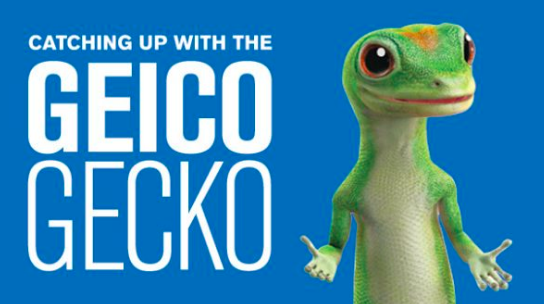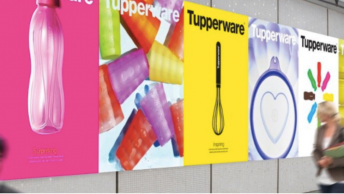In today’s digital marketplace, competition is sharp. Use these branding design strategies to make your brand stand out in all the right ways.
Why Every Digital Brand Needs Branding Design Strategies
Many products on the market are quite similar. After all, there are only so many ways to make a lip gloss or a hammer. What elevates and separates successful companies from those that get left behind is clever and effective branding design.
In fact, according to Nielsen’s Global New Product Innovation Survey, branding is more important than ever. 59% of people prefer to buy new products from brands that they already know.
21% of people say that they are ready to purchase products that come from brands that they like. When people know of and like brands, most of what they like is the branding design.
Subconscious Influence
Even if it does not seem important, the smallest visual things can have a big impact on consumers, which is why these little details are actually not so little at all.
The execution of your branding design strategies can have a big subconscious influence on consumers.
Here is how to use branding design strategies to your advantage.
SEE ALSO: 5 Common Digital Branding Mistakes (and How to Fix Them)
1. Create Business Goals and Brand Personality
While a designer cannot personally set the goals for a business and the personality for an entire brand, these things inform and can be informed by your branding design strategies.
Even though these goals can be changed over time, they need to be set in the beginning so your brand has a starting point from which it can evolve.
Before designers can create the right visual elements for your company, they need to know the character, ethics, personality, and general feel of your brand. You should know these things before you expect the design to begin.
SEE ALSO: How to Create a Brand Identity Guide
2. Make Use of Market and User Research

The work of the designers should be informed by the company’s personality, but it should also rely on research.
Research should be done on the market, on what is working and not working for others, and your digital brand’s target audience. While it is important to cater to the brand image, that should take a backseat to actually catering to the brand’s intended audience.
While branding design is artistic, a lot more must go into it than simply art. Research is what makes sure the look of the brand serves both its growth and its customers.
3. Put More into Logo Design
While a logo is only one part of an entire branding design strategy, its importance should not be underestimated. Often, people will see a logo before they ever know anything about a brand.
These first impressions can make a big difference. As a symbol of your brand, it needs to fit perfectly. The creative process that goes into making the perfect logo includes:
- Setting the task
- User research
- Marketing research
- Creative search
- Style direction choice
- Defining a color palette
- Testing logo in different sizes and applications
- Forming a style guide
One part of research when it comes to logos is taking a look at the logos of competitive companies. Even if you have a great logo, it won’t have the impact you want if it is too similar to other logos, especially ones in your niche.
This can cause confusion and make people think that your brand is trying to copy another brand, which does not give the right impression.
After this comes the creative process of making the logo. Once it is made it will need to be tested in numerous ways.
Not everything that looks good on a screen will look good on a business card, or even on other screens. You need to know that your logo looks good regardless of how and where it is used.
SEE ALSO: 9 Things Logo Designers Wish Clients Knew
4. Know Your Visual Elements
SEE ALSO: 10 Graphic Design Rules You Should Never Break
Branding design doesn’t stop when your brand’s logo is complete. You need to make your brand personable and relatable.
There are many visual elements you can choose from to accomplish this. These include mascots and typography.
Mascots
Mascots can be animals or any type of characters. They give your brand a relatable face. They are a fun and eye-catching way to represent your brand and make it memorable.
Many people begin to see mascots as a major representative of companies. A likable mascot can help endear people to your company.
One example of this is the friendly Geico Gecko.
Typography
Typography can have just as much personality as a mascot. It needs to be consistent in font type, color scheme, and feel throughout all of your branded materials. However, it can be difficult to make typography decisions in the face of so many options.
After all, some fonts read better on screens and others read better in print. Some convey softness and others convey formality. There is a lot to the psychology of fonts.
Some brands even choose to have custom made typography, as they feel this speaks for their brand best. Designers can create custom fonts, giving brands the ability to be unique and thoughtful in every visual detail of their brand.
Other brands choose to use a combination of already existing fonts. There are truly almost endless options.
Airbnb, for example, takes a minimal approach and uses the easy-to-read and popular Circular font throughout their desktop website:

And their phone app:
5. Find Your Corporate Brand Style
When you have your logo, color palette, and other visual elements, it is time to marry them into a single consistent style for your brand. Here are some branded items which need to have a cohesive look as part of your branded design strategy:
- Business cards
- Letterheads
- Envelopes
- Billboards
- Banners
- Vehicle Branding
- T-shirts
- Hats
6. Use A Style Guide
The work on your brand doesn’t end when all of your visual material is complete. After all, you have to know when and what contexts to use all of these visual elements.
This is where a style guide comes in. A style guide is a document that provides instructions and insight into the right and wrong ways to use all the graphics created for the brand.
A style guide should contain these guidelines as well as an explanation of the logo, a corporate color palette, and examples of correct and incorrect usage.
How to Make Sure your Branding Design is the Best it Can Be
Ultimately, a lot of research, work, and art goes into creating the branding design strategies that will elevate a business. A lot of research, effort, and trial and error goes into creating the right look for a brand.
This look must be accessible, consistent, and accurately portray the personality and values of a brand.
First, the company’s personality and look must be defined. Careful research must inform the look and feel of the brand. Then the brand’s logo, website, mascot, advertising, and all other visual elements need to celebrate and promote a cohesive brand image.
What elements of branding design do you think are most important? Comment below…













